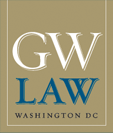Document Type
Book Review
Publication Date
2013
Status
Working
Abstract
These are boom times for scholarship on legal pluralism. With the collapse of the bipolar Cold War order and the increasing recognition of transnational and international institutions and networks that operate distinct from nation-states, observers have used legal pluralism as a useful framework for conceptualizing a world of multiple overlapping assertions of authority. This framework challenges traditional international relations and international law scholarship that has long tended to focus almost exclusively on nation-states, their jurisdictional boundaries, and their interests, goals, and strategies. Legal pluralists insist that an assertion of jurisdiction is only one gambit in an ongoing interplay of social fields, authorities, and actors.
Historians of legal pluralism are a reminder that it has always been thus. Even the most powerful empires in world history only ever governed partially, and there were many spaces left—and often deliberately left—for alternative and competing legal and quasi-legal systems. These liminal spaces formed the locus for jurisdictional battles and strategic action. It is significant that jurisdictional uncertainty often creates multiple ports for entry. An actor unheard in one forum can try another. Therefore, legal pluralism research is not just a challenge to a vision of clear borders among authorities; it also literally opens up space to discover the agency of less powerful actors, who sometimes used that pluralism to jockey for position.
Given this renewed focus on legal pluralism, scholars from many different fields—law, international relations, critical geography, law and society, colonial theory, cosmopolitanism, and religion—should cheer Legal Pluralism and Empires, 1500–1850, as a truly significant contribution to our work. This is a wonderful collection of essays, filled with absorbing stories, underappreciated moments of contestation, and a rich variety of case studies, spanning multiple periods, locations, and types of pluralism. Certainly, this is a must-read for anyone interested in legal pluralism, and although I am not a historian of empires, I suspect that this is also an important addition to our knowledge of how empires operated during their heyday from 1500 to 1850.
GW Paper Series
GWU Law School Public Law Research Paper No. 2017-49; GWU Legal Studies Research Paper No. 2017-49
SSRN Link
http://ssrn.com/abstract=3000624
Recommended Citation
Berman, Paul Schiff, Book Review: Legal Pluralism and Empires (2013). Paul Schiff Berman, Book Review, 33 Law & Hist. Rev. (2015) (reviewing Lauren Benton and Richard J. Ross, eds., Legal Pluralism and Empires, 1500-1850 (2013)).; GWU Law School Public Law Research Paper No. 2017-49; GWU Legal Studies Research Paper No. 2017-49. Available at SSRN: http://ssrn.com/abstract=3000624
